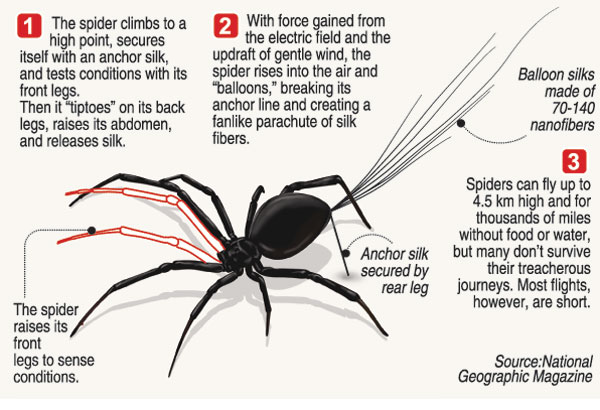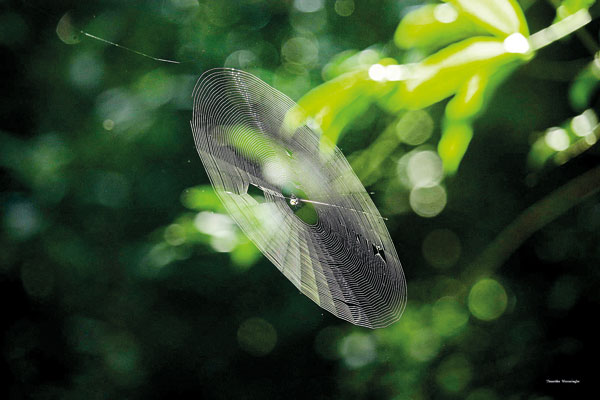News
Blowing in the wind – silky threads of flying spiders cause wonder
View(s):Earlier this month, people in areas such as Hambantota and Ampara reported seeing pale string-like substances floating in the air when they happened to gaze upwards in the morning.
It took no time for conspiracy theories to emerge, one being that Stealth aircraft use such string-like mechanisms to evade radar and were overflying Sri Lanka. The media even contacted the Air Force for clarification and were told there were no links to any aerospace activity.
“There is no reason for panic over everything that falls from the sky,” Professor Chandana Jayaratne, Head of the Department of Physics at the University of Colombo, said, adding, “and in this case, it is not a mystery but a common natural phenomenon.

“What people saw were the strings made by spiders that emit silky strings to travel to different areas, using the wind,” Prof. Jayaratne said.
This phenomenon would be happening at other times as well, but a chance observation this month spread the news and created widespread interest.
Dr. Ranil Nanayakkara, an expert on spiders of Sri Lanka, said “ballooning” was a technique used by many spiders to disperse to new territories to raise colonies. Also known as “kiting”, this method is especially used by young spiders (spiderlings).
“Usually, a spider lays hundreds of eggs, so there can be a sudden population expansion, causing a stiff competition for food in the area. So, a spiderling climbs to a height, with clear space around, lifts its abdomen and shoots several silky threads into the air.
“This silk is thicker than that used by spiders to make webs, and the threads act like a parachute, carrying the spider by wind to a different territory,” Dr. Nanayakkara said.
Airborne travel is easier, faster and less risky than covering the same distance on land. Adults of certain lightweight spider species too use ballooning but it is mostly the spiderlings of the family, Linyphiidae, that use this technique all over the world, according to Dr. Nanayakkara.
Spiderlings time their shooting of the thread to catch a gust of wind, and they often land a few metres away. But spiders have been found high in the air on weather balloons or even floating in oceans after being caught in strong upward draughts, he added.
Research in 2018 found that spiders also use the earth’s electric fields to time their shooting of the thread to “fly” more easily, in circumstances such as when breezes are not strong enough to carry them.
From glands called spinnerets, located at the tip of their abdomen, spiders produce threads for various purposes: sticky threads for trapping prey, fine silk for tying up prey, or a safety line, the kind used in ballooning. According to research, most spiders have three pairs of spinnerets, each having its own function. 
Not a mystery but a common natural phenomenon.
Pic by Thusitha Weerasinghe
Spiders do not have a specific breeding period but there can be seasons such as a period soon after a dry period when there is a boom of egg-laying that later results in heightened ballooning activities.
Their threads are sometimes called “angel hair”, in Australia, for instance, where in 2012 and 2015, millions of spiders were reported to have ballooned, making the ground where they landed seem snow-covered with their silk.
Sri Lanka has 556 species of spiders, making it one of the largest animal groups in the country, with many more species awaiting proper reporting in scientific publications. Along with spiders, some caterpillars also use threads to travel on breezes. The phenomenon has been known since the time of Aristotle, around 350BC.

